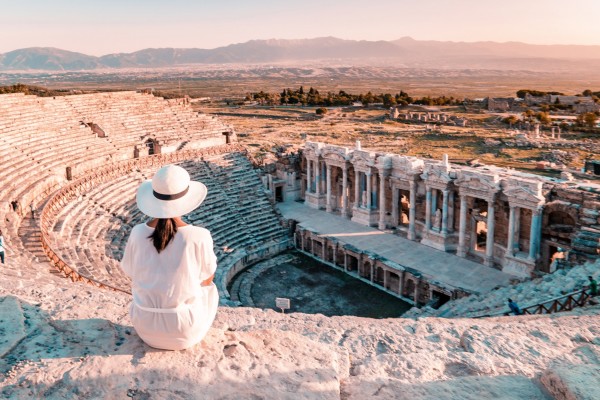Pamukkale
Pamukkale, which is included in almost all the list of must-see places before dying and visited by around 2 million tourists every year, is one of the places where nature plays the role of an artist. The discovery of the attractiveness of Pamukkale, where the white travertines formed as a result of the contact of the thermal waters with the air, formed gradual shapes like a frozen waterfall and formed terrace shaped pools in places, goes back to the Roman period.
Most of the remains of Pamukkale Hierapolis Ancient City, standing next to Pamukkale Travertines with all its glory, are from this period. These ruins are included in the UNESCO World Cultural and Natural Heritage List, along with the incomparable beautiful travertines. We are sure that Pamukkale will fascinate you at first sight. The Kingdom of Pergamon could not resist this attraction 2 thousand years ago and built Hierapolis City next to the travertines. During this period, Hierapolis served as a thermal health center and its sources believed to be healing have been visited by people from different parts of Anatolia seeking health and beauty for thousands of years. Today, thermal pools continue to be visited in search of beauty and health. You can also swim in the pools of the ancient world formed thousands of years ago and watch the magnificent view of the travertines. However, this natural beauty, which took thousands of years to form, is quite delicate. Therefore, only some parts of it can be visited and can be entered into its thermal water. Those who want to stay longer in Pamukkale and benefit from its healing waters can stay in the thermal facilities located near the ancient city and travertines, and enjoy massage, thermal waters and mud baths.

Explore the place
The City Maps
Trip Ideas
FEATURED ARTICLE





